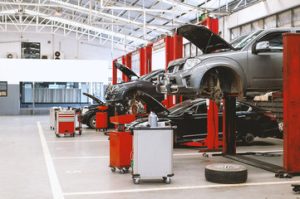
While a DIY towing approach may seem cost-effective and convenient, it comes with numerous risks. These risks include expensive vehicle damage, road accidents, personal injuries, and unexpected expenses.
Often, these problems are made worse when people try to fix them themselves using ropes and their own trucks. This article explains why you should always call an experienced Chamberlayne emergency towing company to handle vehicle issues. Contact Colorado Springs Towing Companies for more information.
Improper Towing Techniques
Not all vehicles are built to tow other vehicles, and even a small mistake can cause damage. Many people use their personal vehicles to tow other cars, trucks or machinery, but this can lead to damage that may not be covered by insurance, leaving the owner with significant repair costs or potential legal liability. The key to a safe and successful tow is using the right equipment for the job, following vehicle-specific guidelines, and performing multiple safety checks.
Using an unsuitable towing vehicle causes unnecessary strain on the tow truck and the towed car, leading to dents, scratches or more serious damage. In addition, the improper use of straps or chains can tear into bumpers or dislodge components, reducing resale value and causing costly repairs.
The extra weight on the back of a towed car can also affect how well the towing vehicle handles on the road, putting both the driver and other motorists at risk. It can also cause brake issues, making it difficult to stop or turn safely. A professional towing company has the equipment and experience needed to handle vehicles of all shapes and sizes safely, avoiding these problems.
Inexperienced towing companies may not follow proper billing practices or have an ineffective dispute resolution process, which can lead to financial losses for both the tow truck driver and the client. The lack of uniform guidelines and rates for towing services contributes to this problem as well, creating an uneven playing field for honest businesses and bad actors. The best way to avoid these problems is by working with a professional Grants Pass tow truck service that follows clear and consistent policies, and has an established dispute resolution process.
Inadequate Equipment
In a time of stress, grabbing a rope and your buddy’s truck to do a DIY tow may seem like an attractive option. Unfortunately, vehicles are heavy, and the process of towing them requires specialized equipment and knowledge of how to move them safely without damaging your vehicle or anyone else’s on the road. As an expert tow truck service, Route 66 Towing uses professional-grade equipment and knows the safest methods for transporting cars from one location to another.
In addition to damage to your towed car, a DIY tow job can also put you at risk of legal issues and unexpected expenses. For example, many states have strict towing laws that can lead to hefty fines and other costly consequences if not followed properly.
The main problem with most DIY towing situations is that the towing vehicle and towed car aren’t designed for this type of load. The towing vehicle’s frame, axles, and engine aren’t built to handle such a heavy load, so even a short distance can cause significant damage if not done correctly.
The same goes for the towed car. The extra weight can affect how it handles on the road, making steering and braking difficult and increasing the risk of accidents. Moreover, some DIY setups block rear visibility, putting other drivers at risk of rear-end collisions. A professional tow truck service is available 24/7 and will have the equipment needed to transport your car safely.
Improper Towing Connections
The towing process requires the use of a wide range of equipment, from safety chains to hitches. It’s important to ensure these connections are well-maintained and free from damage or corrosion before and after each use. Otherwise, they could fail at critical moments and result in injuries to both the towed vehicle and drivers on the road. Moreover, improper towing can also cause significant damages to road infrastructure.
For example, using a trailer hitch that’s not rated for the weight of the load can lead to its detachment during transit. This not only poses dangers to other drivers on the road but can also cost the towing company substantial financial liabilities.
Another common problem is failure to properly distribute the weight of the towed vehicle and load. This can also result in swaying and the risk of losing control. Lastly, failing to check the tire pressure of both the towing and towed vehicles can result in blowouts and reduced handling performance.
Improper towing practices can also increase the wear and tear on both the towing vehicle and towed vehicle, leading to costly repairs. Moreover, a lack of knowledge or experience can lead to inadequate load placement, increasing the risk of jackknifing and rollovers.
Additionally, towing-related accidents are among the leading causes of traffic accidents in Littleton. These incidents are often caused by equipment failure or operator error, including inadequate load distribution, insufficient securing of the load, and inappropriate towing methods. As such, it’s important for drivers to understand the risks of DIY towing and prioritize proper towing techniques to prevent these incidents. In addition, they should also seek professional help if they encounter any difficulties while towing their vehicles.
Lack of Experience
When you find yourself in a vehicle emergency, it can be tempting to save money and attempt a DIY towing. While a rope and a buddy’s truck may seem like a quick fix, DIY towing comes with serious risks that can quickly turn into an expensive nightmare.
Whether it’s the wrong kind of strap or a loose connection, using ropes and chains to tow cars can damage both vehicles. Ropes can snap or loosen, causing the towed car to roll unpredictably. Chains can cause damage to the bumper and frame of the driver’s vehicle. And, improper tie-downs can cause the towed vehicle to drift into traffic or collide with oncoming vehicles.
Driving a vehicle while towing another requires special skill. A lack of experience can put you and other road users at risk.
In addition to the dangers associated with poor equipment and lack of training, DIY towing can also pose legal issues. If your towed vehicle causes an accident while on the road, you could be facing significant fines and legal action.
Professional towing services follow strict safety protocols and use specialized equipment designed for the job. They are also insured, providing an additional layer of protection for your vehicle.
Professional towing companies also offer a range of other benefits, such as comprehensive customer support and vehicle protection plans. These added value features make them more appealing than DIY options, especially when it comes to long-term vehicle care. By relying on professional Chamberlayne emergency towing, you can rest assured that your vehicle will be transported safely and securely. Contact us to learn more about how our towing services can help you navigate emergencies.
Legal Issues
Many states have strict regulations on towing practices, and attempting a DIY tow without the proper knowledge or equipment could land you in serious legal trouble. In addition, if your car is damaged during the towing process, your auto insurance may not cover the costs. Professional St Anthony tow truck services operate within legal guidelines and ensure that every tow is conducted safely.
Most personal vehicles aren’t designed to tow other cars, and even a minor mistake can cause severe damage. For example, improper attachment points can bend or twist a vehicle’s frame. Improper loading on a tow dolly can damage the transmission or cause brake failure. A towed vehicle also takes longer to stop and can block rear visibility, making it hard for you to react to road hazards.
DIY towing is incredibly dangerous, both for you and other motorists on the road. Many injuries are associated with this practice, including strains and sprains. Additionally, it’s not uncommon for towing accidents to result in expensive repairs and medical bills. Professional Lenexa emergency towing services are staffed with experts who know how to properly secure a car and handle the towing process in an accident-free manner.
When your car breaks down, the first instinct is often to call a friend with a truck and try a DIY tow. Unfortunately, this is one of the worst things you can do for your car and yourself. Instead, call a trusted Grants Pass tow truck service and let them take care of everything. They’ll save you time, money, and the hassle of dealing with a costly disaster.






